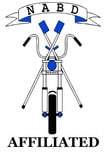Wilson launches new motorcycle test
Posted on
A new driving test for motorcyclists was launched today by Environment Minister Sammy Wilson.
In order to obtain a full licence, motorcyclists will, from 8 December 2008, have to pass three tests – a theory test, a motorcycle manoeuvres test and a practical on-road test.
Previously motorcyclists have had to pass the theory test and an on-road test.
Mr Wilson, a keen motorcyclist, welcomed the new manoeuvres test.
The Minister said: “It is important that motorcyclists are fully equipped for the challenges they will face on the road. The new motorcycle manoeuvres test will enable examiners to test core skills in an off-road environment.”
The manoeuvres test is being introduced by the Driver & Vehicle Agency (DVA) as a result of a European Directive.
The new test will last approximately 30 minutes and will consist of the following exercises:
A slow riding exercise, with the candidate riding alongside the examiner at walking pace.
A slalom and figure of eight exercise.
Walking and ridden ‘U’ turn exercises and use of the motorcycle stands.
A curve, ridden in second or third gear at a minimum speed of at least 30 km/h (18.75mph).
A combined avoidance and braking exercise at a minimum speed of 50 km/h (31.25mph).
An emergency braking exercise at a minimum speed of 50 km/h (31.25 mph).
The manoeuvres test will be available at the following DVA centres: Ballymena, Craigavon, Downpatrick, Londonderry, Mallusk and Omagh.
DVA Chief Executive Brendan Magee said: “This new test aims to improve road safety through a reduction in the level of motorcycle collisions. Only candidates who demonstrate the ability to carry out these manoeuvres safely will be able to progress to the on-road test.”



